Invented by Josef Vincent Koblish, Donghoon CHUN, Jessi E. Johnson, Epix Therapeutics Inc
Contact assessment features refer to the ability of medical instruments to make direct contact with the patient’s body and collect data. This can include devices that measure vital signs such as heart rate, blood pressure, and oxygen levels, as well as those that assess the condition of specific organs or systems.
One of the key advantages of medical instruments with contact assessment features is their ability to provide accurate and objective measurements. By directly interacting with the patient’s body, these devices eliminate the potential for human error or bias that can occur with traditional assessment methods. This ensures that healthcare professionals have access to reliable data, allowing them to make informed decisions about patient care.
Another benefit of these instruments is their ability to provide real-time data. Instead of waiting for lab results or relying on subjective observations, healthcare professionals can immediately assess a patient’s condition and make necessary interventions. This can be particularly crucial in emergency situations where time is of the essence.
Furthermore, medical instruments with contact assessment features can enhance patient comfort and convenience. Traditional assessment methods often require invasive procedures or uncomfortable tests. With these devices, healthcare professionals can gather the necessary information without causing unnecessary discomfort to the patient. This can lead to improved patient satisfaction and compliance with medical procedures.
The market for medical instruments with contact assessment features is diverse and expanding. There are devices available for various medical specialties, including cardiology, pulmonology, neurology, and more. Manufacturers are continually developing new technologies and features to meet the evolving needs of healthcare professionals and patients.
In addition to hospitals and clinics, these instruments are also finding applications in home healthcare settings. With the rise of telemedicine and remote patient monitoring, patients can now use these devices to assess their own health and share the data with their healthcare providers. This allows for more proactive and personalized care, reducing the need for frequent hospital visits.
However, as with any emerging technology, there are challenges and considerations associated with the market for medical instruments with contact assessment features. One of the main concerns is the cost of these devices. While they offer significant benefits, their high price tags can limit their accessibility, especially in resource-constrained healthcare settings.
Another challenge is ensuring the accuracy and reliability of the data collected by these instruments. Manufacturers must adhere to rigorous quality control standards and undergo regulatory approvals to ensure their devices meet the necessary standards. Additionally, healthcare professionals need to be properly trained to interpret and utilize the data provided by these instruments effectively.
In conclusion, the market for medical instruments with contact assessment features is experiencing rapid growth and innovation. These devices offer numerous benefits, including accurate and real-time data, enhanced patient comfort, and improved patient outcomes. As technology continues to advance, we can expect to see even more sophisticated and versatile instruments entering the market, further revolutionizing the field of healthcare.
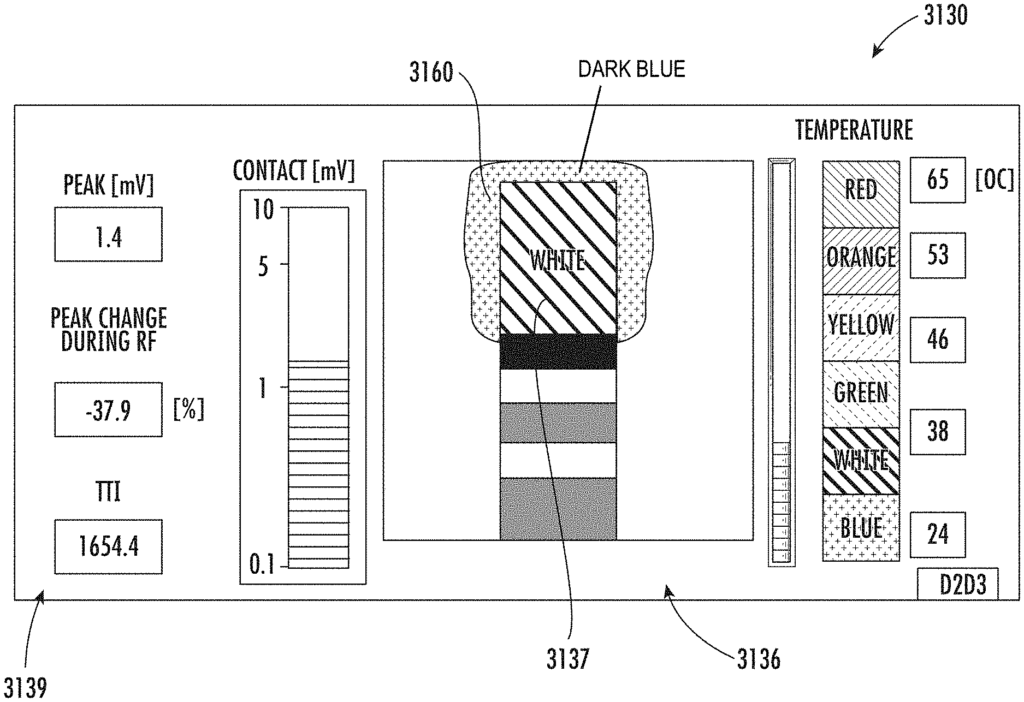
The Epix Therapeutics Inc invention works as follows
The present invention discloses systems and methods that facilitate assessment of the nature of contact between a electrode assembly of an ablating catheter and viable tissue. In certain embodiments, a technique comprises obtaining first detected voltages between a pair of electrodes, first and second, which are located along the electrode assembly of an ablation catheter. The first electrode is positioned distal to second electrode. A second detected voltage can then be obtained between the second and third electrodes.
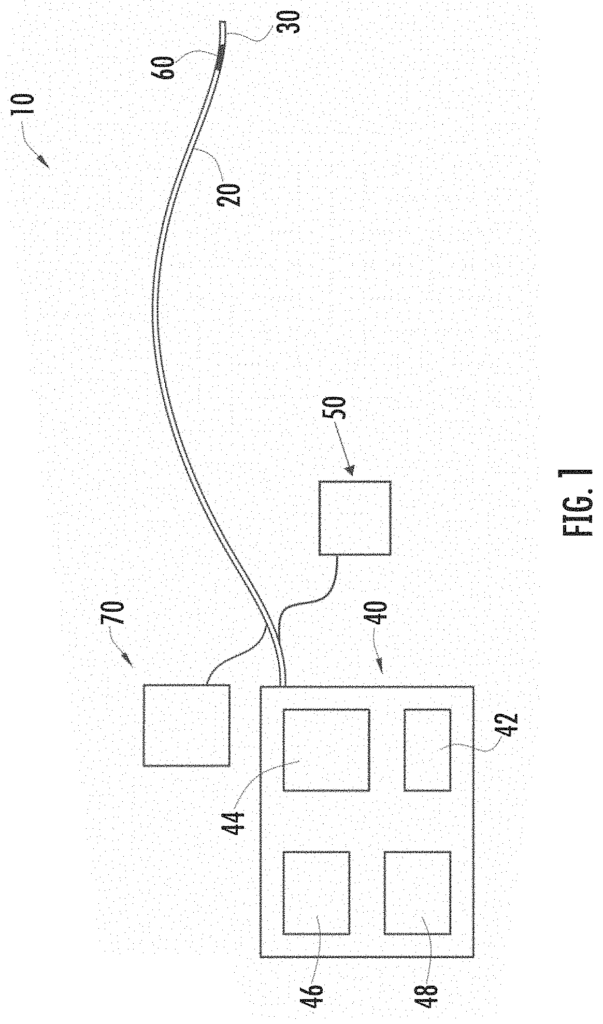
Background for Medical instruments with contact assessment features
Tissue Ablation can be used to treat many clinical disorders. As an example, tissue destruction may be used in the treatment of cardiac arrhythmias, by interrupting or terminating conduction, or at least partially destroying. Aberrant pathways which would otherwise transmit abnormal electrical signals to heart muscle. Cryoablation is one of the many ablation techniques that have been developed. Others include microwave ablation and radio frequency (RF). In cardiac applications, these techniques are usually performed by a physician who inserts a catheter with an ablative endocardial tip via the veins, positions the tip in a region that the clinician believes is appropriate based on the mapping of electrocardiogram signals, anatomy and/or fluorescent imaging, activates flow of an irrigation to cool the surface, and then activates the ablative endocardial tip at a level and duration believed to be sufficient to destroy the tissue. The clinician aims to achieve stable and uniform contact with the electrodes and tissue during ablation procedures that use radiofrequency energy.
Successful electrophysiology requires precise knowledge of the anatomic substrate. Ablation procedures can be evaluated in a very short time period after they are completed. The majority of cardiac ablation catheters only carry regular mapping electrodes. Cardiac catheters can include high-resolution mapping electrodes. These high-resolution electrodes can provide more accurate information on the anatomic substrate as well as the outcome of the ablation procedure. Electrophysiology can use high-resolution mapping to assess the morphology, amplitude and widening of electrograms and determine changes in pacing limits. Electrophysiology markers such as morphology, amplitude, and pacing thresholds are reliable and accepted. They provide valuable information about the outcome.
The method of some embodiments is to obtain a voltage between an electrode assembly and viable tissue. This is done by obtaining the voltage between an electrode assembly and an electrode assembly, with the electrode assembly positioned between the electrodes. A second voltage can be obtained between the electrode assembly and an electrode assembly, which is positioned between the electrodes.
According to some embodiments the method also comprises displaying a level contact between an electrode assembly and viable tissues on a graphic representation of the assembly, wherein the threshold voltages are the same, and wherein one or more of the threshold voltages is around 0.30mV (0.30v, 0.2-0.4mV, 0.300-0.32mV, 0.302-0.34mV, 0.304-0.36mV, 0.38-0.40mV, ranges in between, etc.). “According to some embodiments, the method further comprises displaying on a graphic representation of an electrode assembly a level contact between the assembly and viable tissues. The first threshold voltage is the same as the second threshold voltage. At least one of the first threshold voltage and the second are at or around 0.30 mV (e.g., 0.30 v; 0.2-0.4 mV, 0.30-0.32 mV, 0.32-0.34 mmV 0.36-0.38 mmV 0.36-0.38-0.40.
According to certain embodiments, the method also comprises displaying a level contact between the electrode and viable tissue on a graphic representation of the assembly;
wherein displaying the level of contact between an electrode assembly (and viable tissue) on a graphic representation of the assembly includes including a halo, or another visual overlay around the graphic representation and wherein said halo, or other overlay, comprises at least one parameter related to the intensity of contact. In some embodiments the first threshold is the same voltage as the second threshold. In some embodiments the first threshold voltage falls within a range of 0-20%. “The second threshold voltage is within 0-20% of the first threshold voltage.
According to certain embodiments, the first threshold and second threshold voltages are both 0.30 mV. In some embodiments at least one threshold voltage (between 0.2 mV to 0.4 mV) is 0.30 mV.
According to certain arrangements, the system comprises displaying a level contact between an electrode assembly and viable tissues on a graphic representation of the assembly. In one arrangement displaying the level of contact between the electrode and viable tissue in a graphic representation of an electrode assembly includes adding a halo around the graphic representation of the assembly. In some embodiments the halo, or other visual overlay, includes at least one parameter related to the intensity of contact between an electrode assembly and viable tissues. The at least parameter of the halo, or other visual overlay, in some configurations, includes at least one of: size, shape color, intensity, shading, brightness, contrast texture, and/or like.
According to certain embodiments, the method also includes determining the orientation of an electrode assembly in relation to viable tissue. In some embodiments comparing the first and second comparisons is used to determine the orientation of an electrode assembly with respect to viable body tissues. In certain arrangements it is determined that the electrode assembly relative to the viable body tissue has a parallel orientation when the first detected value is equal or higher than the first threshold voltage and the second detected value is equal or higher than the second threshold voltage.
Accordingly, in some embodiments the threshold difference percentage is between 0 and 10% (e.g. 3-7, 2-8, 0-1, 1-2, 2-3, 3-4. 4, 5-6. 6-7. 7-8. 9-10%. In certain arrangements, the first detected voltage must be at or above the threshold voltage and the second detected is below it.
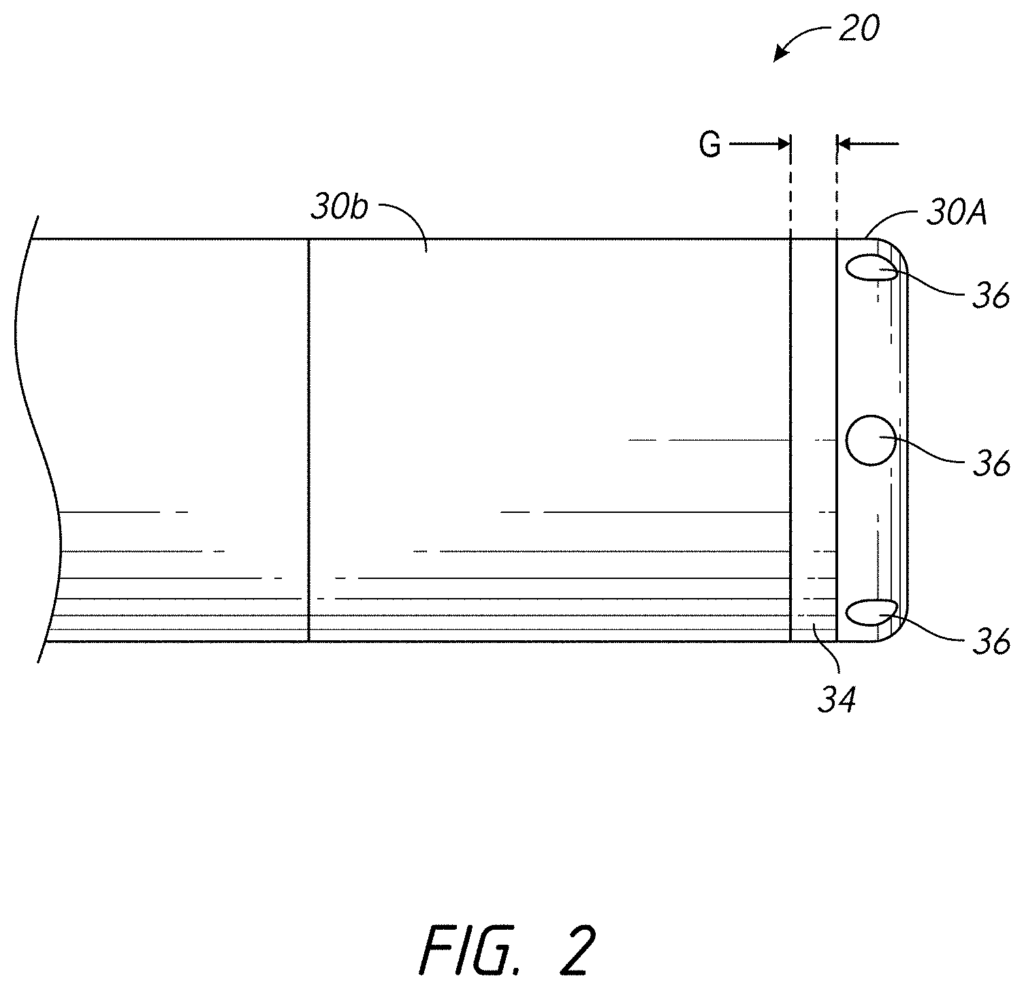
Accordingly, in some embodiments the first electrode comprises an electrode distal tip member, and a second is separated from the first by a gap distance. The first and second electrodes can be electrically connected by a filtering component to form a composite electrode assembly. In certain arrangements, the gap distance is set at 0.5 mm. In some arrangements, the gap is between 0.1 and 1 mm.
Accordingly, in some embodiments the third electrode is a ring-shaped electrode. In certain arrangements, the second and third electrodes are separated by a second distance. In one embodiment, this second gap distance is equal to 1 mm. In some arrangements, the second distance between 0.5 and 2 mm.
According to certain embodiments, a method also comprises displaying the real-time temperatures of the electrode assembly. In some arrangements, the real-time electrode assembly temperature is displayed using a graphic representation. In some arrangements the color-coded temperature graphical representation is displayed by a user.
According to certain embodiments, a method may also include providing a visual indicator to an end-user of the status and outcome of an ablation. In some arrangements the visual indication is determined at least partly by (i) the temperature of the electrode assemblies, and (ii), at least one (a) of the first comparison of the first detected voltage with the first threshold voltage and (b) of the second comparison of the second detected voltage with the second threshold voltage. In some embodiments, displaying on an output a graphical indication indicative of the status is a way to provide a visual indicator. In certain configurations, the graphic representation includes a frame or a peripheral border surrounding a graphical image of the electrode assembly.
According to certain embodiments the frame or peripheral borders are configured to change colors to inform an user of at least one of the following:
According to some embodiments the frame or peripheral borders are configured to change colour. The change in visual configuration can be configured in some embodiments to inform the user that: (i), energy delivery has not yet been initiated to the assembly, (ii), energy delivery has already been initiated to the assembly but the formation of lesion is not yet underway, (iii), energy delivery has begun to the assembly and the formation of lesion is underway, (iv), energy delivery has started to the assembly and the formation of lesion is underway, (v), energy delivery has initiated the assembly and the completion of lesion formation
The system can be configured to compare the first detected power with a threshold voltage. This first threshold is indicative of viable tissue contacting a portion of an ablation cathode, which is positioned between the two electrodes.
According to some embodiments the system also comprises a display configured for displaying on a graphic representation of the electrode assemblies a level contact between the electrode assemblies and viable tissues, wherein first threshold voltage equals second threshold voltage. At least one of first threshold voltage and second threshold is around or at 0.30mV (0.30v; 0.20-0.4mV,0.30-0.32mV,0.32-0.34mV,0.34-0.36mV,0.36-0.38mV, 0.38-0.40mV, etc. “According to some embodiments, the system further comprises a display configured to display on a graphic representation of an electrode assembly a level contact between the assembly and viable tissues. The first threshold voltage is the same as the second threshold voltage. At least one of the first threshold voltage and the second threshold value is at or around 0.30 mV (e.g., 0.30 v; 0.2-0.4 mV, 0.30-0.32 mV, 0.32-0.34 mmV 0.36-0.38
According to some embodiments the system also comprises displaying, on the display, a graphic representation of an electrode assembly the level of tissue contact. Displaying a level contact the electrode and viable tissues on a graphic representation of an electrode assembly includes including a visual overlay or halo around the graphical image of the assembly. The visual overlay or halo comprises at least one parameter related to the intensity of tissue contact between the assembly and the tissue. In some embodiments the first threshold is the same voltage as the second threshold. In some embodiments the first threshold voltage falls within a range of 0-20%. “the second threshold voltage”.
According to certain embodiments, the first threshold and second threshold voltages are both 0.30 mV. In some embodiments at least one threshold voltage (between 0.2 mV to 0.4 mV) is 0.30 mV.
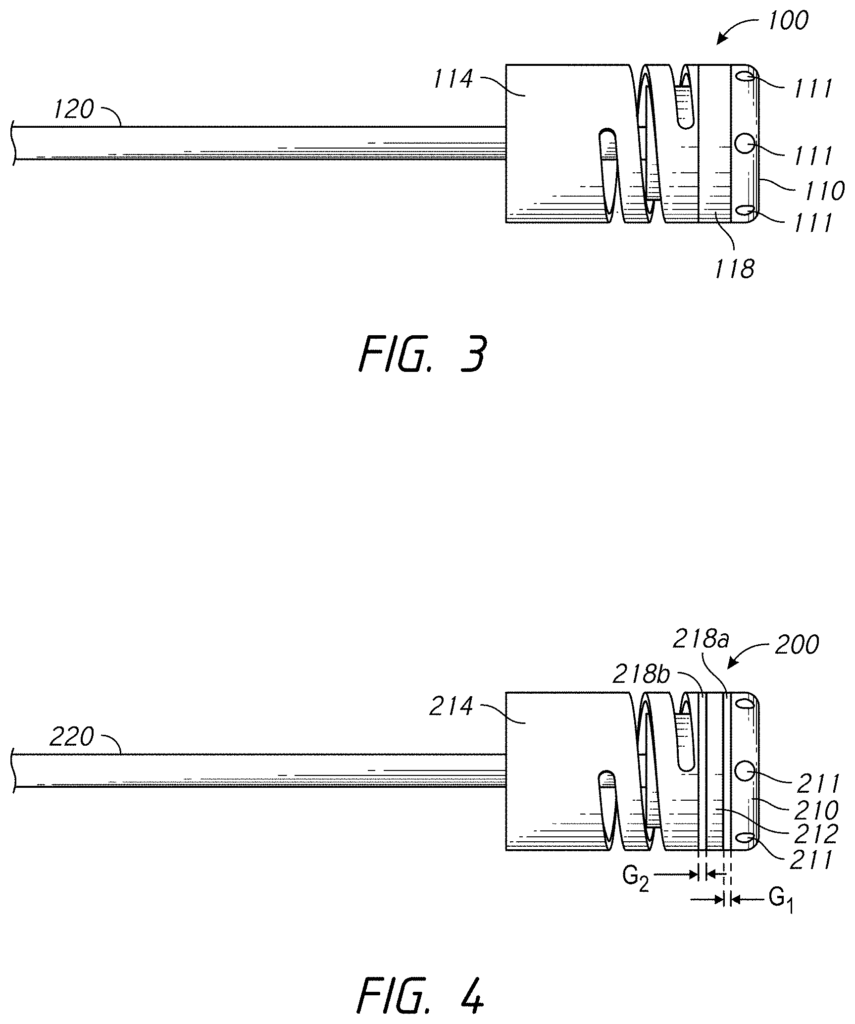
According to certain arrangements, the system can be configured to display a level contact between an electrode assembly and viable tissues on a graphic representation of the assembly. In one arrangement, the level of contact between the electrode and viable tissue is displayed on a graphic representation of an electrode assembly by including a visual overlay or halo around the graphic representation. In some embodiments the halo, or other visual overlay, includes at least one parameter related to the intensity of contact between an electrode assembly and viable tissues. The at least parameter of the halo, or other visual overlay, in some configurations, includes at least one of: size, shape color, intensity, shading, brightness, contrast texture, and/or like.
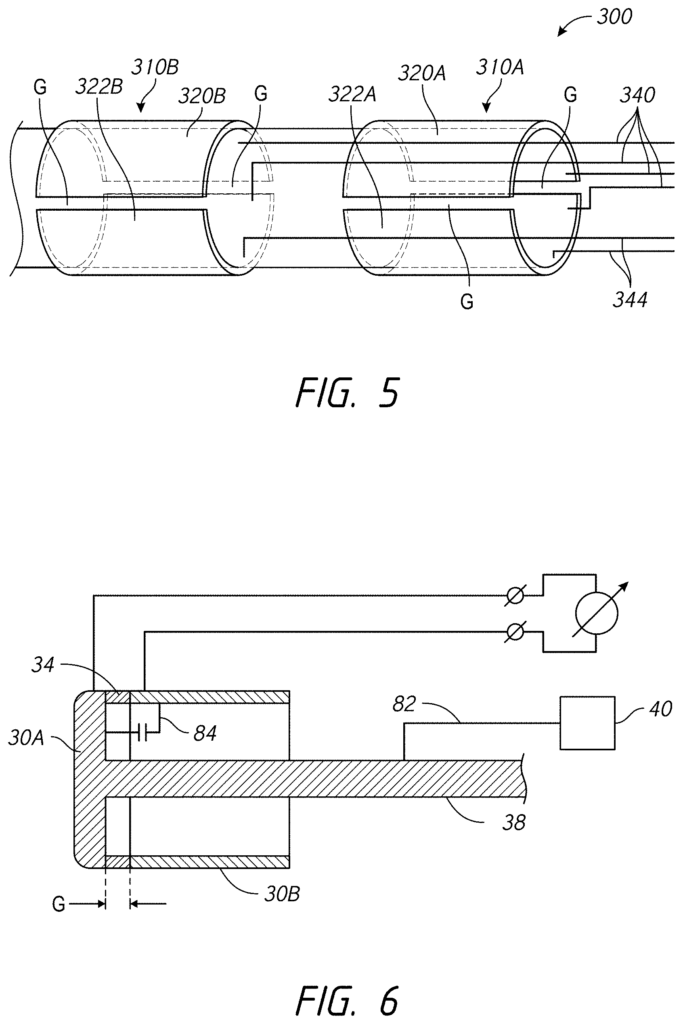
Click here to view the patent on Google Patents.
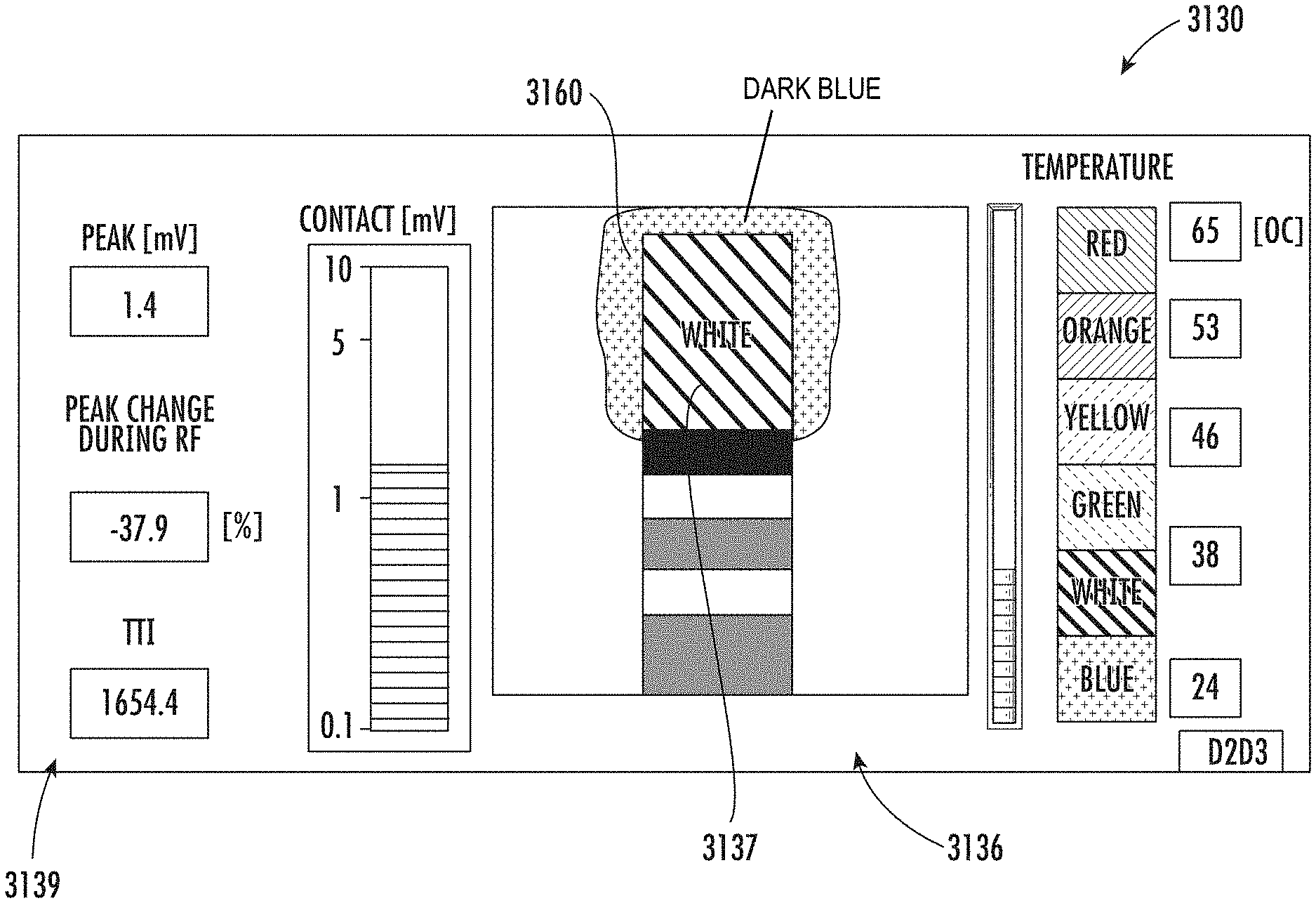
Leave a Reply